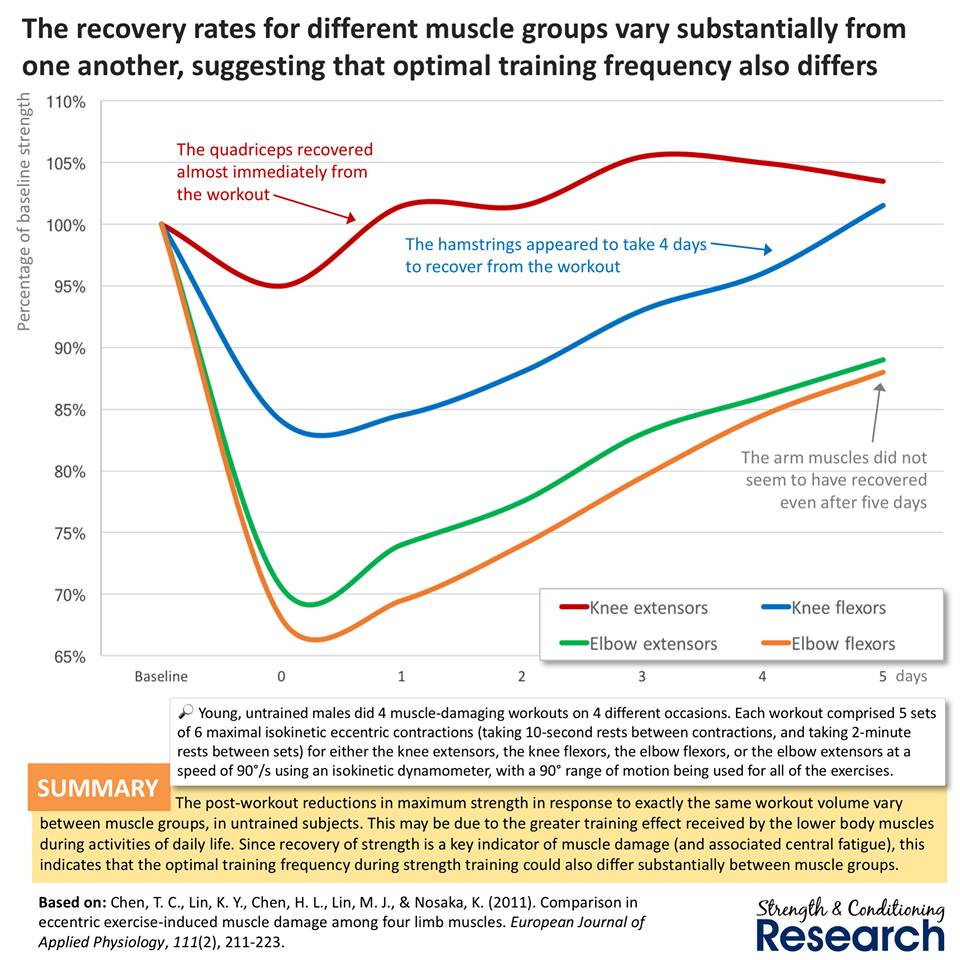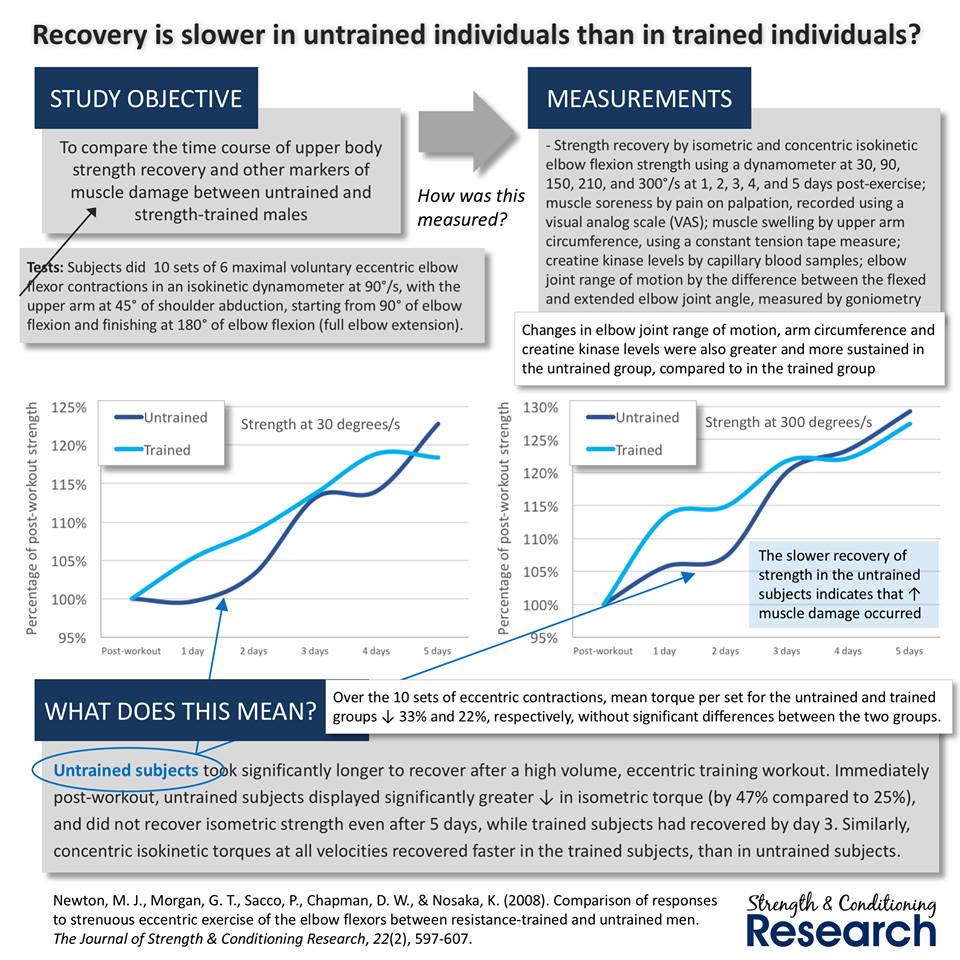Chew on this:



That’s extremely valuable information. ThanksChew on this:


Dean, I had an 8 month SD due to shoulder surgery this year and did not see much muscle loss. I picked up where I left off and two months later I am seeing some good gains from where I was pre-surgery. I think much off that muscle retention is from having worked out for about 60 years. Someone who has not worked out for very long probably would see greater losses.
Like muscle memory, I believe that muscles become acclimated to being a certain size over time. Can't prove it though! And I do not know where the time line ends and hope to never have to find it out.
Thanks O&G for posting.
Makes sense that recreational folks have more trained legs than upper bodies. And we know from much research and experience that recovery goes faster the more trained one is.
The question I still ask, and have yet to get any conclusive answer to from any source:
How long does it take for ATROPHY to set in? How long do you keep your Gainzzz?
That is sort of the opposite question of what is the absolute soonest you can train again. If we had some guidelines to how long we keep gains at the end of a cycle, or a single workout, that helps determine the length of SD. It could effect workout frequency, but maybe not as much, in an HST program where optimization is the goal. Getting Mom off the couch and please do some air squats once a week is way better than being totally sedentary. But that is not the crowd HST is trying to address.
So is it true that in highly trained folks, like all us iron heads on these forums, that the time course for atrophy is about the same as the time course for hypertrophy? Any where close?
It would be great if Bryan, et al would respond to this.
Thanks
Great to hear you're back training O&G
Thanks NW, interesting. This does support lower frequency for maintenance and "just good" results.
Sure, if you are happy with where you are currently but do not want to lose any muscle. As long as your diet is spot on with your activity level and encourages the production of testosterone and not cortisol, you can go years with just one or two 1/2 hour full body workouts per week and not lose any significant musculature. Assuming, of course, you are not starting in contest shape and have just 4% body fat.
